
An educational webinar titled “Protect you and your family with good quality and healthy air” was organised by UTAR Division of Community and International Networking (DCInterNet) on 27 July 2020 via Zoom. The invited speaker was MayAir Manufacturing (M) Sdn Bhd Project Management and R&D Northern Branch Manager Jack Ng Wei Lin. The webinar was moderated by DCInterNet Director Assoc Prof Dr Lai Soon Onn.
The webinar aimed to look into the potential air pollutants that affect the air quality and also the method to control or reduce them. It also aimed to educate participants on the functions of air filtration and ventilation systems in offices, classrooms and houses.
During the sharing session, Ng gave a brief explanation on Indoor Air Quality (IAQ) and shared how one could protect themselves with good quality and healthy air through source elimination, ventilation and air filtration. Apart from that, he also explained on the regular IAQ assessment that included preliminary stage, sampling stage, evaluation stage and recommendation stage.
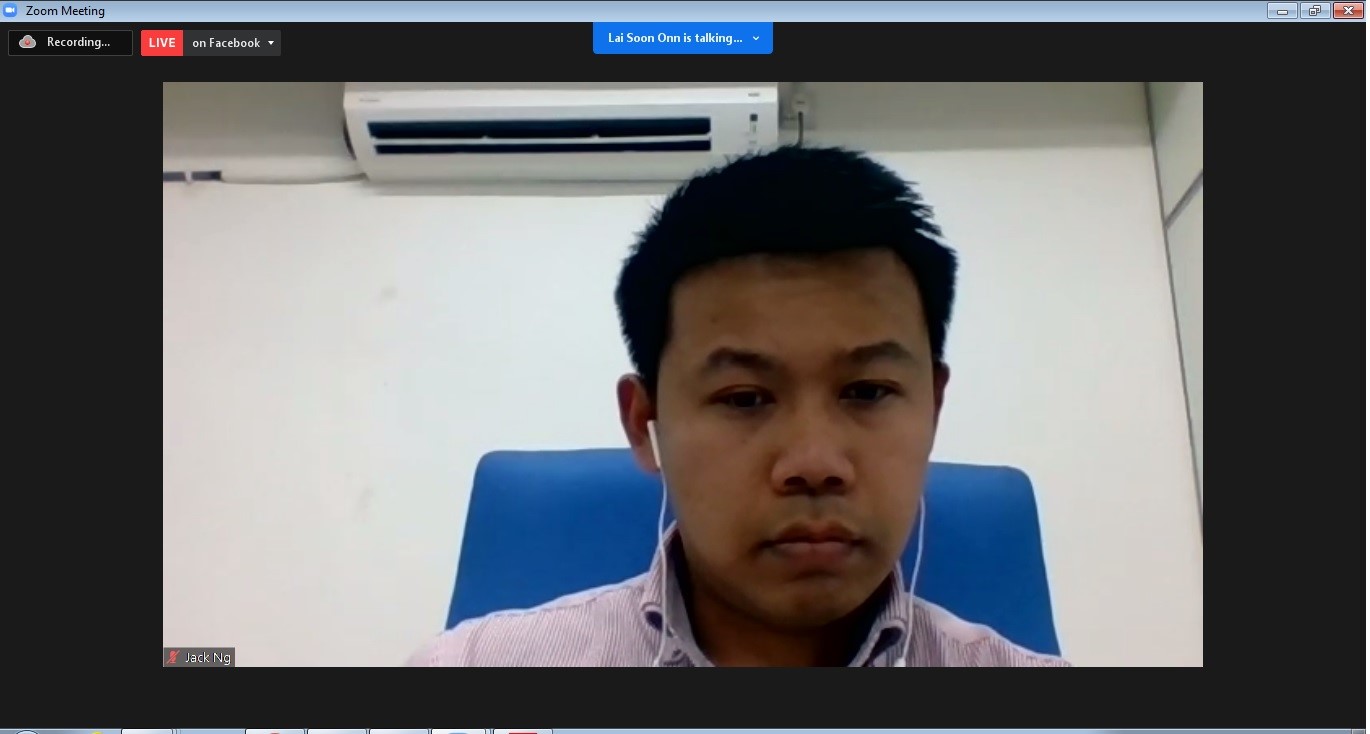
Ng explaining indoor air quality (IAQ)
“Clean air is crucial in our lives as we breathe in around 13-15kg of air every day while we only need to consume about 1kg of food and 2kg of fluids per day. Besides, we tend to focus more on the outdoor air pollution, but we spend almost 90% of our time indoors. There is a statistic showing that the infection of SARS- CoV-2 is higher among people who stays indoor (7,322 cases) than outdoor (2 cases). This also indicates that polluted air is more serious indoor compared to outdoor,” Ng said while stressing on the need for people to know more about the importance of IAQ.
He then moved on to explain the four categories of air pollutants which were physical parameters (air temperature, relative humidity and air movement), chemical contaminants (carbon monoxide, formaldehyde, ozone, respirable particulates, TVOC), ventilation performance indicator (carbon dioxide) and biological contaminants (total bacterial counts and total fungal counts).
“The users should also understand the ventilation for acceptable IAQ. The acceptable IAQ is the air in which there are no known contaminants at harmful concentration as determined by cognizant authorities and with which a substantial majority (80% or more) of people exposed do not express dis-satisfaction,” Ng said and added, “According to William P. Bahnfleth, the goal of the indoor environment should not only be acceptable to the occupants, but it should also be truly safe, healthy, productive and comfortable.”
Furthermore, Ng also explained the effects of poor IAQ in the short and long term. “The short-term effects due to poor IAQ include Sick Building Syndrome (SBS) such as headache, nausea, burning eyes, skin rashes, upper respiratory problem and fatigue. While the long-term effects include Building-related Illness (BRI) and Environmental Illness (EI) that could bring long-life effects to our body. The long-term effects also include legionnaire’s disease, hypersensitive pneumonitis, allergic rhinitis, humidifier fever, asthma, mycotoxin intoxication and endotoxin intoxication,” Ng said.
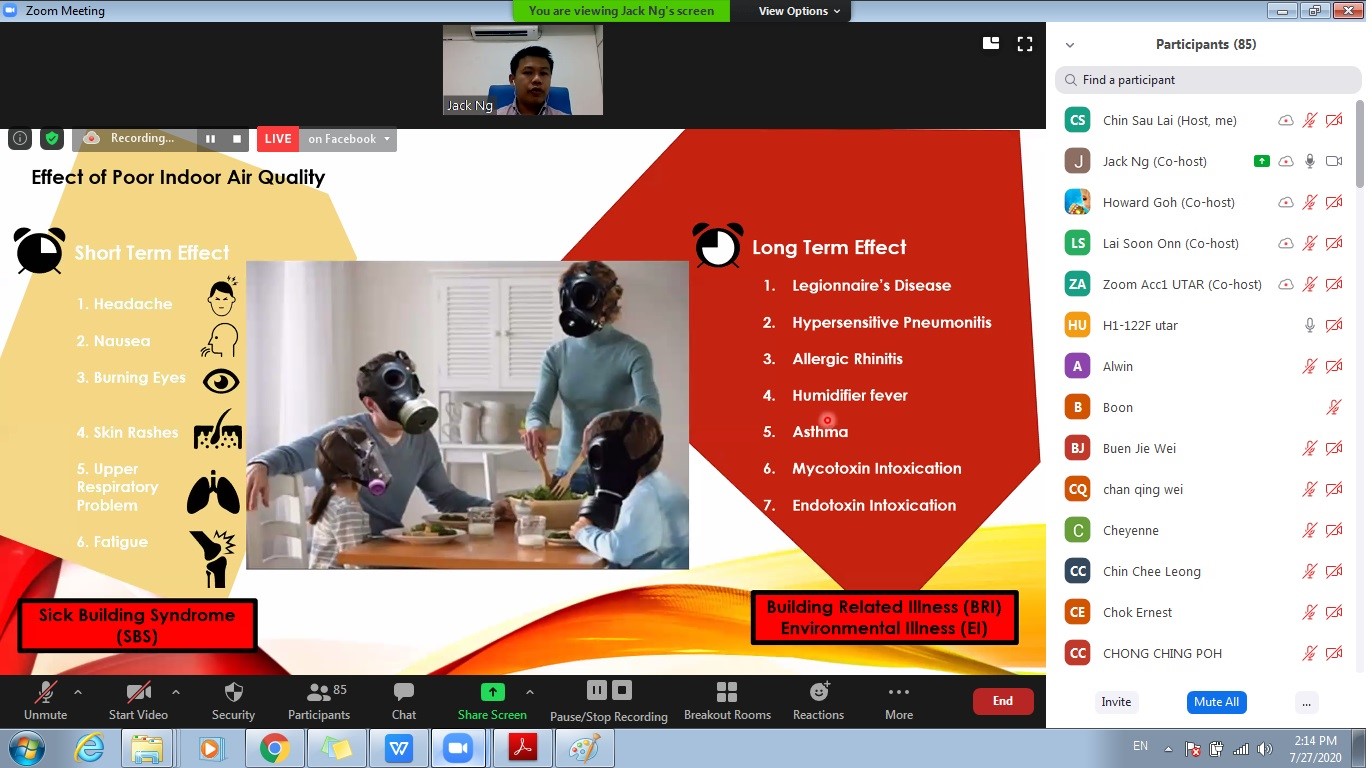
Ng explaining the effects of poor IAQ in both short and long term
“Source Elimination is useful to remove the source of indoor pollutants such as Volatile Organic Compounds (VOC) released from furnishing and building materials, chemical fumes from paints and solvents, chemicals from cleaning products, cigarette and tobacco smoke, as well as animals’ hair and dander,” Ng said and explained, “First, you have to remove the use of contaminants, then you replace the products. We could do the Source Elimination through renovation, painting, pest control, enforcing smoke-free policy as well as managing moisture and mould.”
“For Ventilation Improvement, we control the air circuit by switching on the Split Type Air Conditioner. I have to stress it here that we should open windows to allow the circulation of air when we switch on the Split Type Air Conditioner. For the university’s library and lecture halls, we suggest to install Air Conditioner that has a fresh air system because the users would not feel sleepy if the air circulation is good,” Ng said. He also spoke about some details on how Ventilation Improvement could work on maintaining healthy air.
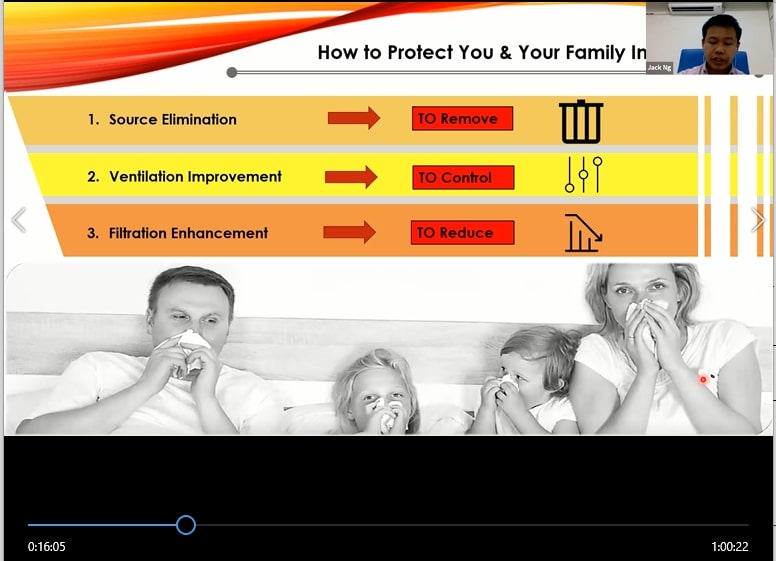
Ng explaining Source Elimination, Ventilation Improvement and Filtration Enhancement
He continued by sharing information on Filtration Enhancement that is used to reduce poor air quality indoor. Ng elucidated that the filter could capture aerosol contaminant (not with 100% certainty) as well as removing mould by controlling humidity. However, the filter could not kill any germs, virus, bacteria with filtration media itself. In addition, to apply Filtration Enhancement indoor, the recirculation in space or system is required.
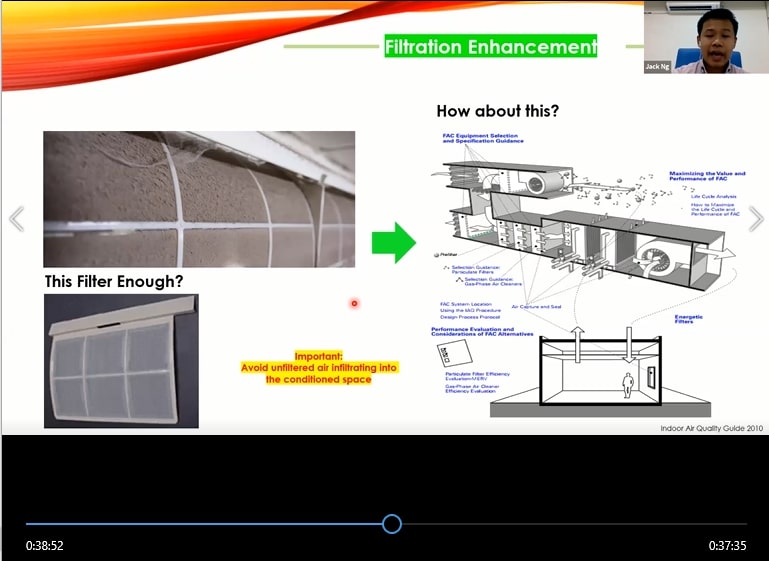
Ng showing the inner parts of an air filter
Towards the end of his sharing, Ng taught the participants how to select a good air cleaner. The sharing session ended with an interactive Q&A session.
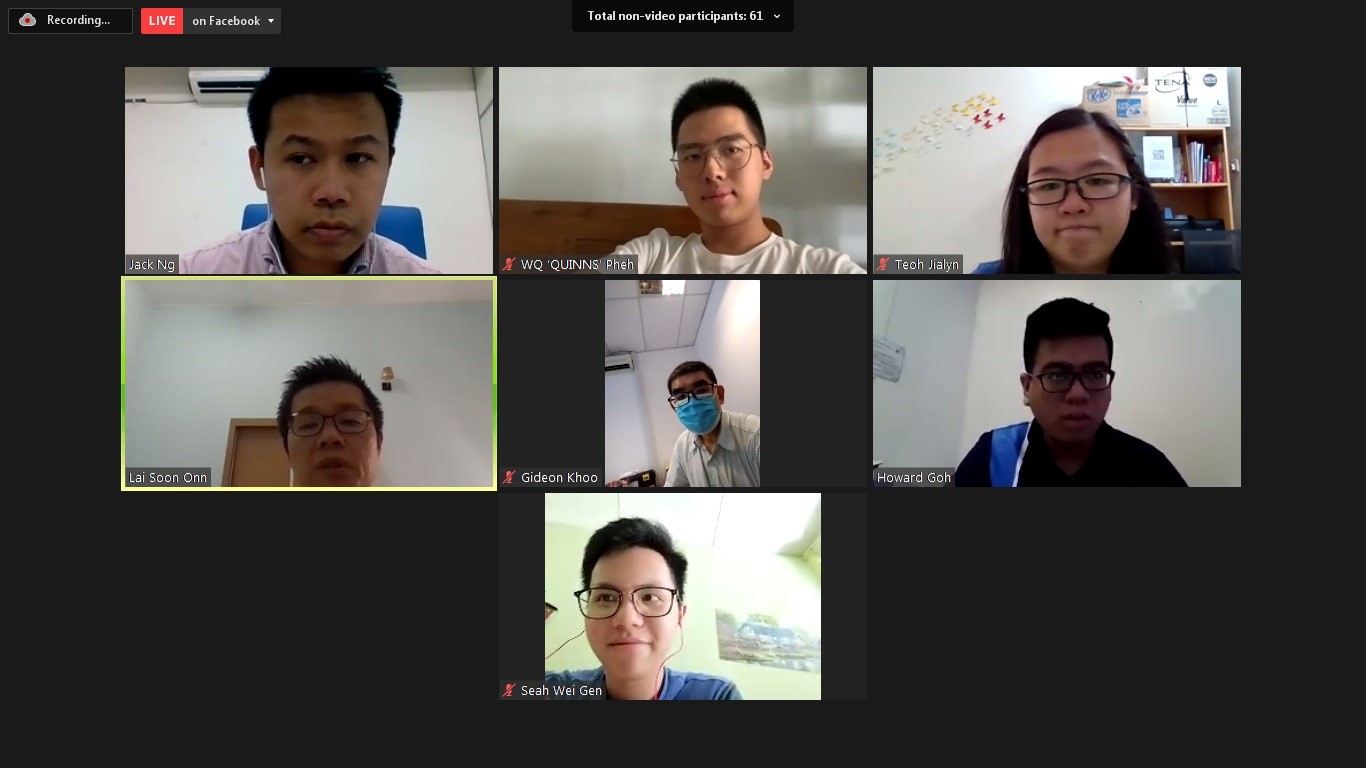
Most left: Ng (top) and Dr Lai (bottom) taking group photo with participants
© 2020 UNIVERSITI TUNKU ABDUL RAHMAN DU012(A).
Wholly owned by UTAR Education Foundation Co. No. 578227-M LEGAL STATEMENT TERM OF USAGE PRIVACY NOTICE